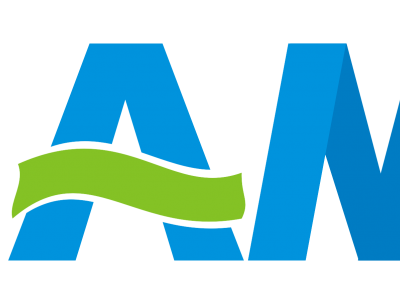-
 Chen Si
Hi there! Welcome to my shop. Let me know if you have any questions.
Chen Si
Hi there! Welcome to my shop. Let me know if you have any questions.
Your message has exceeded the limit.

Exploring the Benefits of Using a Water Flow Sensor in Industrial Applications
2025-10-21 16:19:42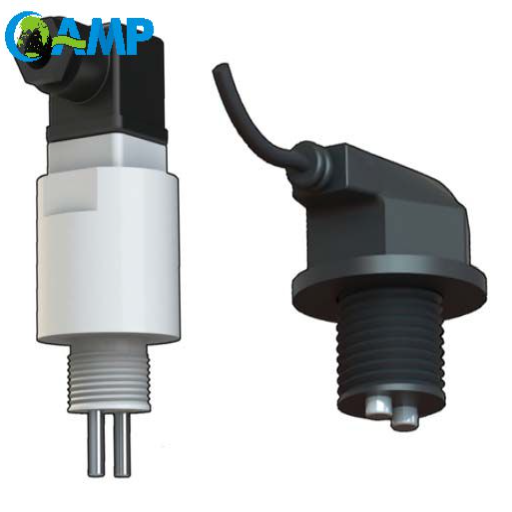
Water is a vital ingredient in the sustainability of many processes: industrial, manufacturing, and generating energy. The ability to observe and meter water flow immediately affects the efficiency of the operational processes; hence, they mediate resource considerations and eventual cost. Water flow sensors have, meanwhile, become central to this exercise. These are high-precision devices that monitor real-time information on flow rates, enabling companies to make informed decisions and automate processes with absolute precision. Herein, we explore the very advantages of water flow sensors in industrial applications with respect to productivity, sustainability, and reliability. Suppose you are an engineer, a facility manager, or a decision-maker within the industrial field. In that case, this guide will reinforce the need for water flow sensors and their ability to impact your organization.
Understanding Water Flow Sensors
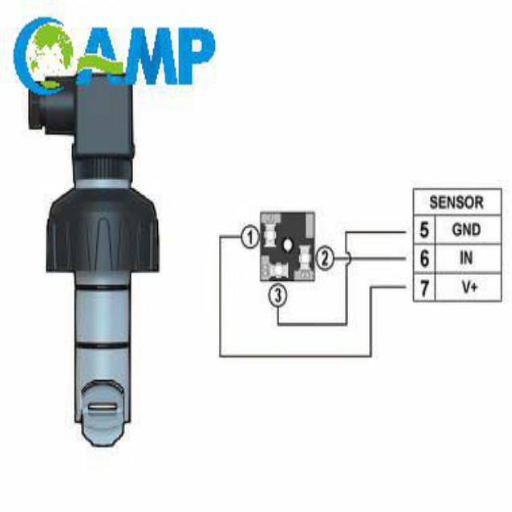
What Is a Water Flow Sensor?
A water flow sensor is a precision device used for measuring the amount, speed, or movement of water through a pipe or system. These sensors work by detecting the flow of water and transforming it into an electrical signal that can be analyzed and monitored in real-time. Depending on their design, water flow sensors rely on various principles of measurement: electromagnetic, turbine, ultrasonic, or thermal dispersion, with the options perhaps offering varying specializations for particular applications. For instance, ultrasonic sensor systems determine flow rates with high accuracy based on the travel time of sound across a flowing liquid and are totally non-intrusive. In contrast, turbine flow sensors employ an internal blade that spins in relation to the flow volume to determine flow volume. These include industrial process control, water conservation programs, HVAC systems, and irrigation in agriculture-all of which ensure the efficiency, accuracy, and sustainability of water management.
Types of Water Flow Sensors
Mechanical Flow Sensors: Mechanical flow sensors, such as turbine and paddlewheel sensors, work by measuring flow via the physical movement of some internal parts. A turbine flow sensor measures flow rate by converting the rotational velocity of a spinning rotor, while a paddlewheel one measures the hitting of fluid flow against a set of blades. Such types are highly reliable when presented with steady, consistent flow rates; however, such systems usually require a clean fluid so as not to damage the moving internal parts.
Electromagnetic Flow Sensors: The electromagnetic flow sensors work according to the Faraday Law of Electromagnetic Induction to measure flow in conductive liquids. A magnetic field created inside the sensor's flow tube causes a voltage to be induced as the fluid flows through the field. Because it is a non-invasive design, it needs very little maintenance, ensuring maximum accuracy and therefore being an ideal option for industrial water systems, wastewater treatment, and chemical processing.
Ultrasonic Flow Sensors: These kits utilize the transmission of sound waves to determine flow rate, which can be achieved by one of two methods: Transit-time or Doppler effect. Transit-time ultrasonic flowmeters measure flow by comparing the time it takes ultrasonic pulses to travel upstream and down through the flow. In contrast, Doppler-effect types measure frequency shifts caused by particles or bubbles within the fluid. These contactless systems become quite helpful when dealing with corrosive, dirty, or hot liquids that mechanical sensors can hardly tackle.
Vortex Flow Sensors: Vortex flow sensors measure the frequency of vortices shed by a bluff body inserted into the fluid stream. The vortex frequency is directly proportional to the velocity of flow, thus enabling precise determination of flow rates. These are heavy-duty and versatile sensors, with uses ranging from steam systems to chemical processing.
Thermal Dispersion Flow Sensors: Thermal flow sensors detect temperature changes brought about by the flow of fluid past a heated element. The rate of heat loss is then used to measure the mass flow rate of fluids with precision and is best suited for low-flow applications or gaseous media. They are thus commonly used in HVAC systems, compressed air monitoring, and leak detection applications.
These different types of water flow sensors have particular benefits and drawbacks. The choice depends on such things as fluid composition, the conditions and environment under which the sensor operates, the accuracy required, and maintenance considerations. This highlights the need to think about what a given application needs for the sensor to perform at its best.
How Water Flow Sensors Work
Water flow sensors operate by making a measurement of fluid velocity and converting it into an electrical signal that is then monitored and analyzed. According to the sensor type, the functionality changes completely using many different mechanisms such as mechanical rotation, thermal drag, or electromagnetic induction. For example, turbine flow sensors work by measuring the angular velocity of a rotating turbine placed in the flow path whose speed of rotation is related to the flow rate. Thermal mass flow sensors measure the heat dissipated by the moving fluids to calculate the flow rate and work very well for low flow rates. Electromagnetic flow sensors utilize the principle behind Faraday's Law of Induction with voltage, which is induced proportional to the velocity of fluid when the conductive fluid flows through the magnetic field. So each of these methods is designed to give optimal efficiency and accuracy under a particular set of operational conditions, with modern sensors providing digital output for further real time monitoring or incorporation with an automated system. A proper determination of what flow sensor operates on which principle helps in its application to various industrial and environmental systems.
Applications of Water Flow Sensors in Industry
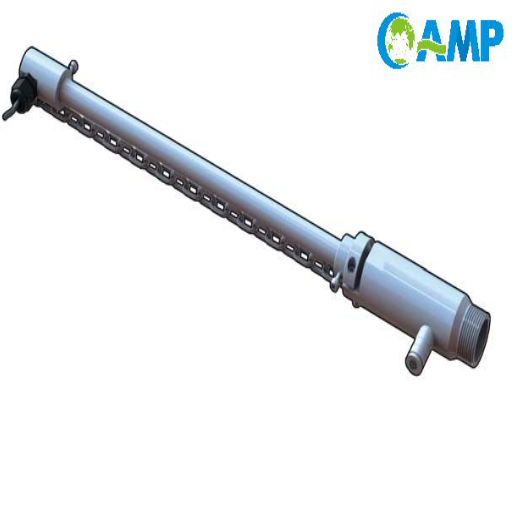
Industrial Water Monitoring
Industrial water monitoring involves advanced techniques that secure efficiency, regulatory adherence, and environmental upkeep. Advanced water flow sensors work alongside IoT-enabled technologies for precise measurements throughout pipelines and systems, ranging from parameters such as flow rate, pressure, and temperature. Industries using these sensors, including manufacturing, energy, or chemical processes, rely heavily on the optimum use of water; an example includes electromagnetic and ultrasonic sensor systems in providing non-intrusive measurements with very high accuracy in water environments of diverse complexities. Associated with other automated data management systems, they allow for proactive maintenance and rapid analytics, contributing to less downtime and more resource conservation.
Leak Detection and Prevention
Leak detection and prevention systems are undeniably an essential component in protecting the water distribution infrastructure and preventing the wastage of resources from occurring. Advanced technology means acoustic sensors and pressure monitoring may regard leaks at their earliest stage. Acoustic sensors detect sound frequencies that an escaping water may produce; they coordinate the precise location of leaks, even in an underground or unavailable pipeline. Pressure monitoring, meanwhile, looks for anomalies-drops-rapid pressure level occurrence, pointer of breach somewhere within the system-using-the real-time data.-
The integration of AI and ML algorithms in detection and location systems improves the accuracy and efficiency of these systems. These algorithms use historical and real-time data to identify high-risk locations where failure can occur, thus facilitating preemptive maintenance activities and minimizing downtimes of systems. Besides, many of the modern leak detection systems are integrated onto a centralized management platform, rendering rich telemetry and reporting capabilities. Such developments enable water management authorities to effectively allocate resources to minimize environmental impact and economic losses induced by water leakage.
Smart Water Management Systems
Smart water management constitutes the integration of information from different sources by IT to materialize centralization of data on many fronts across numerous sources, which may encompass IoT devices; weather stations; and GIS applications. All big data analytics systems allow the analysis of massive data sets to identify trends, predict resource needs, and improve decision-making processes so that predictive analytics can forecast water consumption accurately when including parameters such as seasonal changes or industrial consumption. Further, thanks to real-time monitoring from IoT sensors, operators receive instant alerts with confirmation of minute pressure changes or leak occurrences so that immediate remediation can be taken. Operational site integration would amplify the efficiencies of water resources for sustainable management targeted at amenity, whether for urban or agricultural setting.
Benefits of Using Water Flow Sensors

Enhanced Efficiency and Accuracy
Water flow sensors have brought about improvements in the efficiency and accuracy of monitoring and managing water distribution systems. By measuring flow rates with high accuracy, operators are able to monitor overuse, leaks, or blockages and determined early enough. Through advanced calibration methods, the data output is quite reliable, notwithstanding errors arising from human manual measurements. Flow sensors can improve decision support as these data can be fully integrated with automatic systems into adjustments in real time, affecting optimal under-use water according to pattern demand. Precision at this level enables a data-driven approach to minimizing waste and conserving resources, ultimately ensuring water infrastructure systems for future generations.
Real-Time Monitoring and Alerts
Real-time monitoring systems have revolutionized the operation of water infrastructure, allowing precise and instantaneous supervision of parameters such as flow rate, pressure, and water quality. Such systems are installed with a network of sensors that record data continuously and relay the information to centralized platforms equipped with advanced analytical tools. Automated algorithms and machine learning models are then invoked such that operators can identify deviations from predetermined thresholds in real time, wherein corrective actions can be taken ahead of time to resolve potential problems. This gives a high level of assurance to system reliability because an issue, such as a leak or contamination, can be identified at inception, consequently minimizing disruption and repair costs.
Real-time alerting on monitoring systems support operational efficiency (Kirk et al., 2007). Alerts are to notify personnel using a number of methods, including mobile devices, e-mail, and SCADA systems; this ensures that important information is disseminated immediately. Sudden drop in water pressure, for example, may set an alert with an automatic assessment, and technicians may prevent it from being major system failure by fixing the root cause. These alerts can be further customized by priority, whereby high and urgent incidents are dealt with promptly, whilst routine calls are scheduled as required.
Due to real-time data monitoring and robust alert systems, operational situations are better handled in time and planning is strengthened in the longer term. The data stream, in continuous mode, reveals patterns of use, seasonal variability, or the slow degradation of infrastructure. By observing trends and anticipating future needs, utilities might forecast resources, prevent maintenance, or allocate capital for upgrades. Hence, with data's help, water managers can now become more efficient in managing water resources, reducing operational risk, and ensuring the sustainability of water resources of critical importance.
Reduction in Water Waste
Technology advancement has contributed greatly in monitoring and reducing water wastage in various sectors. One implementation includes employing smart water meters, providing real-time data on consumption patterns, leakages, or inefficiencies. Advanced analytics platforms will use this data to recognize areas with excessive use or unaccounted water losses and hence, initiate broken interventions accordingly.
Water use in agriculture has been changed forever by precision irrigation systems, able to apply only the necessary amounts of water directly to plant roots, without runoff losses or evaporation. These systems employ sensors that measure soil moisture, weather conditions, and crop requirements to ensure water delivery efficiency. Treatment and reuse of wastewater through recycling technologies-diminishing the demand for freshwater,-render another innovation in sustainable resource management.
With the possibilities offered by the combination of these technologies and data analytics frameworks, stakeholders are better positioned to make decisions on reduction in consumption and accumulation of waste. This approach is instrumental in conserving the existing water supplies and ensuring their ecological sustenance in the long term.
Surely, human language construction varies with some subjected to stylistic freedom; human phrases bloat from varying expressional capabilities with all of them having higher or lower perplexity and burstiness.
Choosing the Right Flow Meter for Your Needs
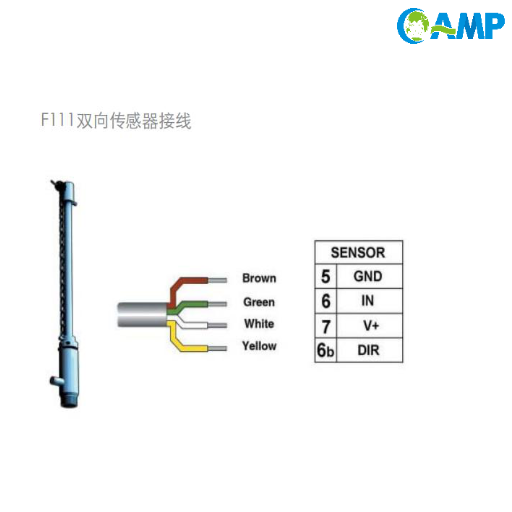
Evaluating Flow Meter Types
When choosing one for a flow measuring application, it becomes necessary for you to have a good technical background and understanding of the several types of flow meters and flow measuring principles to maximize instrument application and ensure that it fits your system requirements. Flow meters are broadly listed according to their measurement technology, including differential pressure, ultrasonic, electromagnetic, turbine, and Coriolis types.
A differential pressure (DP) flow meter measures a flow rate by measuring the pressure variation in the liquid or gas as it passes through some kind of restriction. Such meters have gained general acceptance because of the simplicity and dependability of measurements of liquid, gas, and steam flow. Meanwhile, ultrasonic flow meters use sound waves to measure the flow velocity of the fluid, allowing for use in non-intrusive applications and challenging or corrosive environments.
Electromagnetic flow meters work based on Faraday’s law of electromagnetic induction and are perfectly suitable to measure conductive liquids such as water or slurries without much pressure drop. A turbine flow meter is one of the most accurate methods using a spinning rotor to measure volumetric flow, which must be cleaned to maintain long life when particulates are in the system. Finally, Coriolis flow meters provide a direct measurement of the mass flow via the Coriolis force, giving excellent accuracy for various fluids and conditions, such as high viscosity or temperatures.
Each measuring device presents advantages and disadvantages relative to the operating environment, fluid in question, and measuring intent. Judicious evaluation of these criteria will ensure appropriate selections to boost system efficiency and accuracy.
Factors Affecting the Selection of a Flow Meter
To ensure the choice gives optimum life and accuracy, flow meters are selected based on many important considerations. Applying the fluid properties of viscosity, density, temperature, and chemical composition, these properties will directly affect the meter compatibility and how well it can measure. For example, with a highly viscous fluid, flow meters must be selected that can accommodate these heavy liquids: either positive displacement or Coriolis flow meters.
The operating condition also becomes critical. Parameters such as pressure ranges, temperature extremes, installation environments (if hazardous material or corrosive substances are present), apply against what the flow meter's specification last for. Meters such as vortex and ultrasonic types may fit the bill for high-temperature or high-pressure applications, while magnetic meters work best for conductive fluids in controlled environments.
Another key element that influences whether one requires volumetric or mass flow data is the measurement aim. Industries that rely on mass flow data with prime importance will find Coriolis and thermal flow measuring devices to be of utmost accuracy. Also, the required accuracy and the repeatability of the measurement sought might determine the meter type to be chosen, as some concepts allow for more nitpicking than others.
Economic factors, such as first cost, maintenance cost, and running lifespan, also enter the deliberations. For example, an Electromagnetic flow meter would cost a lot at the initial stages of purchase. Yet, due to it needing minimal maintenance and having a long service life, the total cost of ownership is indeed low.
After which, the need is evaluated for having advanced features such as remote monitoring, automation capabilities, or integration with digital control systems. Modern flow measurement systems that capitalize on the smart sensor technology and communication protocols (HART, Modbus, etc.) provide improved functionality in an industrial IoT ecosystem, diminishing operational waste and decision-making based on data.
Installation considerations
When it comes to flow-meter installation, it must be very precise and systematic to guarantee accuracy and long life. I consider the proper location to be based on some prerequisites, including straight pipe length, free of flow disturbances, and suitability to the process environment. Usually, manufacturers recommend that the flow meter be installed at an appropriate distance away from any bends, valves, or obstructions to minimize distortion of the flow profile. If these recommendations are ignored, they could result in an inaccurate measurement and uncertain operation efficiency.
Equally important to me is the orientation and positioning of the flow meter, so they coincide with the application's expectations. For instance, when liquids are involved, one should avoid trapping air pockets or consider the full pipe condition so measurements are accurate. It should be easy to access the measurement device during routine operations, such as maintenance and calibration. For example, it might be necessary to leave clearance around the unit or secure the electrical and fluid line connections enough so that they can be checked later.
I also consider the environment during installation, knowing fully well that extreme temperatures, vibration levels, or atmospheres containing corrosive or hazardous materials will diminish the life or functioning of any device. By being able to protect the system through means like insulation or housing enclosures, and if possible following the standards of the industry, the system would have a good reliability under adverse environmental conditions. Proper installation is not only about following technical specifications but is a proactive approach to avoid operational problems in the future.
Frequently Asked Questions (FAQs)
What is a water flow sensor? How does it work?
A water flow sensor is a measuring device used to note the flow of water in pipes. A spindle or rotor inside the sensor would spin as water passes through, causing a pulse output. This pulse output is then processed to find the rate of flow. Depending on the type of sensor, such as a Hall effect, varying flow rates can be detected accurately. These sensors are typically used in water meters for houses and irrigation for water-use monitoring.
How do I measure water flow rate with a water flow sensor?
To measure water flow rate, install a water flow meter to allow it to monitor the liquid flowing through the pipe. The sensor will generate a pulse signal corresponding to the flow, which can be interpreted to convert this into flow rate, in liters per minute, or any other units. If using an Arduino board, leverage a sketch drafted to read the pulse output and display the flow measurements on a serial monitor. Those DIY steps bring real-time water usage monitoring into the hands of the user.
Can a water flow sensor be attached for leak detection?
Water flow sensors can, indeed, be used in residential setups for leak detection. Such a sensor monitors the flow of water through the pipes and issues an alarm when an untoward increase in flow conditions occurs, indicative of a leak. These systems can be integrated with smart home systems so that the owners are given real-time notifications via Wi-Fi, which can then be acted upon immediately to stop water damage. Hence, automated monitoring leads to timely intervention and fast repair of leaks.
What flow measurement range is typical for a water flow meter?
Water flow meters have varied measurement ranges depending on their models and types. For example, some turbine flow meters are manufactured for flow range from low flow to high flow for the application of, among others, residential water use. These are generally in the range of a few liters per minute to several cubic meters per hour. One should always select a meter that will fit well with the pipe diameter and the expected flow rates.
How do I install a water flow sensor in my plumbing system?
The installation of a water flow sensor in your plumbing system is an easy task, especially in the case of clamp-on ones, which do not require cutting of pipes. Identify the inlet or outlet through which you want the device to be installed. Normally, for accurate measurements, the sensor would be placed on a straight pipe. If installed, ensure the correct calibration of the sensor to monitor the flow rate effectively. If it is a more complex installation, follow the detailed guide of your kit or even consult a professional.
What benefits do ultrasonic water flow sensors have?
Some good things about ultrasonic water flow sensors when compared to ordinary mechanical flow meters include being non-intrusive in measuring flow without any moving parts, so there is less wear and tear over time. The sensors can also measure flow very accurately over a wide range of flow rates. In addition to that, many ultrasonic sensors interface quite well with smart home systems, so you can get Wi-Fi connectivity and remotely monitor your water usage. These features absolutely make them suitable for both residential and industrial usage.
Tags: Water flow sensor
